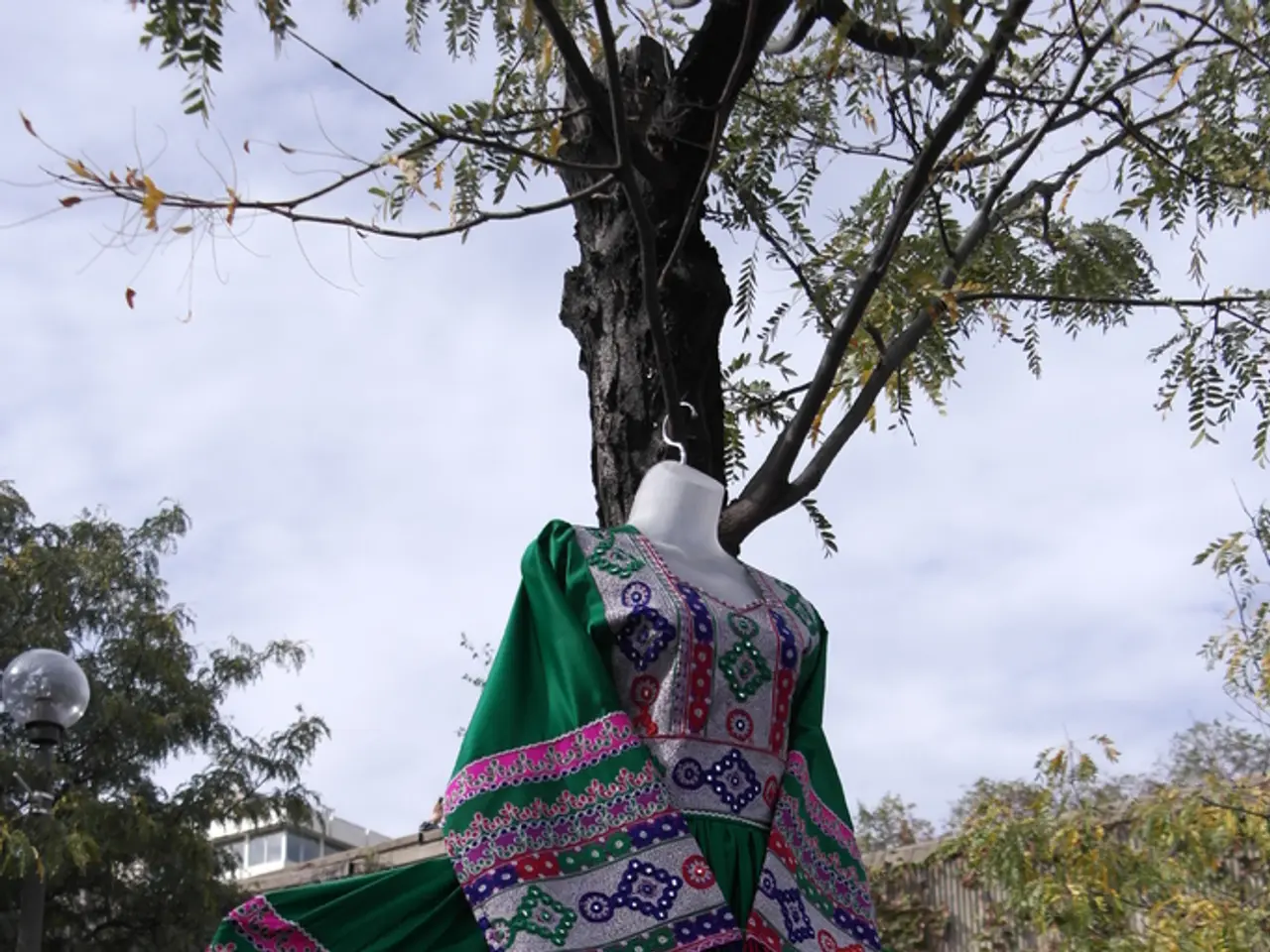Guide on Outsourcing Clothing Production: Examining Advantages and Disadvantages for Small Fashion Enterprises
In the ever-evolving world of fashion, small businesses are constantly seeking ways to scale their operations efficiently. One such strategy is outsourcing clothing manufacturing, a practice that, when done correctly, can offer numerous benefits. Here's a step-by-step guide to help you outsource manufacturing effectively.
Firstly, it's crucial to determine your needs. Decide on the type of clothing you want to produce, assess how many units you need to produce initially, and set a budget for manufacturing costs, including sampling and production.
Next, choose a manufacturing partner. Consider whether you want to work with local factories for easier oversight or go overseas for potentially lower costs. Utilize platforms like Maker’s Row or MFG for local options, or work with a sourcing agent for international partners.
Once you've narrowed down your options, evaluate potential manufacturers. Ensure they can meet your quality standards, have experience in producing similar products, and establish clear and reliable communication channels.
Creating a brand profile is the next step. Develop a brand profile to communicate your brand identity, requirements, and expectations to potential manufacturers.
Negotiate terms based on your production volume and budget, ensuring the manufacturer can meet your production timelines and requesting samples to test quality and fit before proceeding with full production.
Consider no-minimum manufacturing services like FABRIC Incubator, which offer flexibility and customization for small batches.
Monitor production regularly, checking the quality of production to ensure it meets your standards and establishing a feedback loop to address any issues promptly.
As your company grows, consider a manufacturer's ability to support more production. Analyse the frequency and amount of production to ensure they align with the minimum order numbers some manufacturers require.
Sustainable and ethical manufacturing techniques are in greater demand as environmental concerns gain importance. Examine the manufacturer's labour policies, environmental initiatives, and adherence to moral principles to ensure everything is in line with your brand's ideals.
Local and nearshore manufacturing is becoming more popular due to shorter shipping times and control over production procedures. A cost analysis comparing the price of in-house production against outsourcing should be done, including shipping, customs fees, quality assurance, and any potential hidden costs.
Production processes are becoming more automated due to technological improvements. Prior to considering outsourcing manufacturing to another nation, it's critical to have a firm grasp on your objectives.
Outsourcing clothing manufacturing allows fashion companies to focus on design, branding, and marketing while entrusting the intricate details of manufacturing to specialist manufacturers. However, potential drawbacks include quality control concerns, communication and coordination issues, loss of intellectual property, dependency on third parties, reduced flexibility, lead time and shipping delays, risk of communication breakdowns, and hidden costs.
Blockchain technology can improve supply networks' authenticity and transparency. Collaborative partnerships involving tight collaboration between brands and manufacturers to innovate, exchange ideas, and create new goods and services collaboratively may become more common.
A thorough manufacturing agreement detailing roles, deadlines, quality requirements, costs, payment conditions, intellectual property rights, and dispute resolution procedures should be created. An ERP solution can simplify supplier management, purchase order management, and production tracking and monitoring.
Building a solid, reliable partnership with an outside manufacturer takes time. An exit strategy should be in place if the outsourcing deal doesn't meet expectations. Communication capabilities, particularly if there are time zone or language differences, should be considered.
Outsourcing in fashion manufacturing is the practice of handing off production to overseas manufacturing companies for clothing. Effectively working with outsourced manufacturers requires researching potential manufacturers, sending RFPs, negotiating, developing samples, creating agreements and contracts, and managing logistics and shipping.
In conclusion, by following these steps, small fashion businesses can effectively outsource their clothing manufacturing and scale their operations efficiently, while maintaining control over quality, sustainability, and brand identity.
- To maintain quality and control in fashion manufacturing, small businesses should implement rigorous quality control measures, ensuring that outsourced manufacturers adhere to the set standards.
- As minimal turnaround time and cost-effectiveness are crucial in the fast-paced fashion industry, businesses must assess potential manufacturers' turnaround times and financial dependencies while balancing quality and costs.
- By understanding the latest trends in fashion, lifestyle, and business, small fashion companies can identify the need for diversification, such as venturing into the fashion-and-beauty market, and strategically choose manufacturers to scale their operations efficiently.




